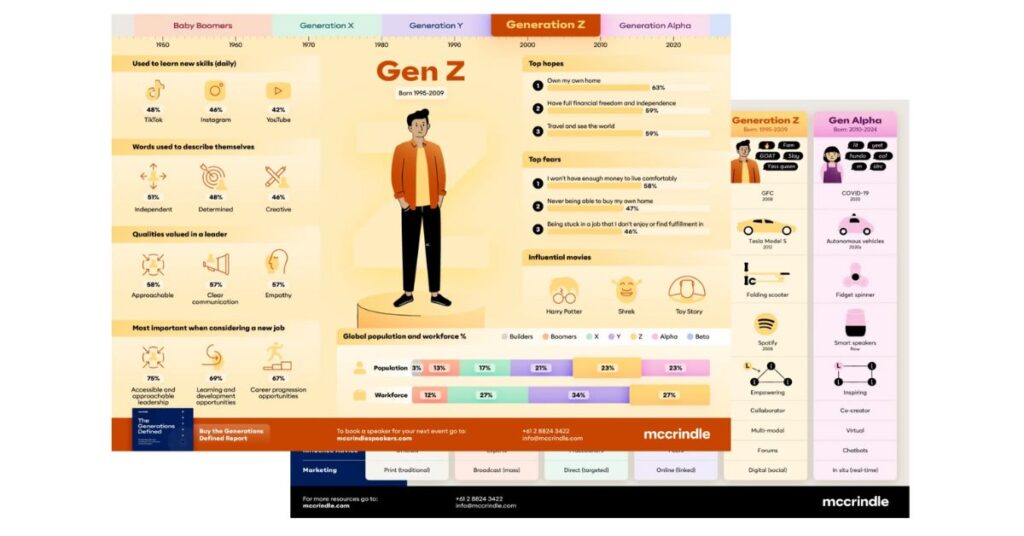
The Profile of Australia’s Hybrid Worker
By: Mark McCrindle
Australia’s working dynamic has evolved into three ways of working: workplace, remote and hybrid.
Hybrid work has gained popularity in recent years since COVID-19 and is now the most likely scenario for Aussie workers with 45% of Australian’s working in this format. This mix of working between workplace and remote has uncovered the typical hybrid worker: young, educated and located in capital cities with a family.
Young hybrid workers
Of hybrid workers in Australia, Gen Y (born 1980-1994) are the most likely generation to work remotely with over two in five Gen Y working in a hybrid format (43%). This is in comparison to 25% of Gen X and 24% of Gen Z being hybrid workers.
Remote workers, however, are most likely to be Gen X (34%) compared to 18% Gen Z and 31% Gen Y, while workers working from the workplace are also likely to be Gen X (36%) compared to Gen Z (20%) and Gen Y (30%).
While these emerging workers greatly benefit from receiving feedback and guidance experienced by gathering together in the workplace as they progress in their careers, the familiar territory of hybrid work allows them to grow accustomed to a normal mode of work as they look to their future.
Hybrid workers and higher education levels
Hybrid workers are more likely to be highly educated to a Bachelor’s degree level or above (56%) compared to those working in the workplace full time (37%) and remote work (41%). Those who are highly educated tend to have more knowledge-based job, allowing these workers to opt for a more flexible lifestyle and choose between working from their office or remotely.
Capital cities and hybrid workers
Hybrid workers are most likely to be located in capital cities, allowing the commute to the office to be convenient, while enjoying the flexibility of working remotely. A greater proportion of hybrid workers (66%) are based in capital cities, compared to those workers who work predominantly in the workplace (62%) and remote workers (62%). Given the density of offices within capital cities and CBD’s alike, it is fitting that hybrid workers are more likely to be located in capital cities, allowing their commute to the workplace to be manageable, while they balance their lifestyle with working from home.
Hybrid workers and their families
For many, hybrid work has made working for many possible due to the flexibility this mode of work brings. Hybrid work allows those who have families to seek work arrangements that accommodate family needs. More than half of hybrid workers (52%) have a family with children, compared to just 39% of workers who are fully in the workplace, and 41% remote workers. This mode of work is future-focused as the change has meant a greater work-life integration for growing families and evolving generations.
Generation Z Infographic
Drawing on the insights from our new Generations Defined report, this infographic on Generation Z includes data on, their population and workforce participation, top hopes and fears, and qualities they value in leaders.

Article supplied with thanks to McCrindle.
About the Author: McCrindle are a team of researchers and communications specialists who discover insights, and tell the story of Australians – what we do, and who we are.

Other Articles You May Like

By: Joni BoydWarning: The following article contains content that some...

By: Sabrina Peters The circle of control is a concept...

By: Helping HandsListening is the best place to start when...

By: Russ Matthews Written and directed by Spanish filmmaker Pablo...

